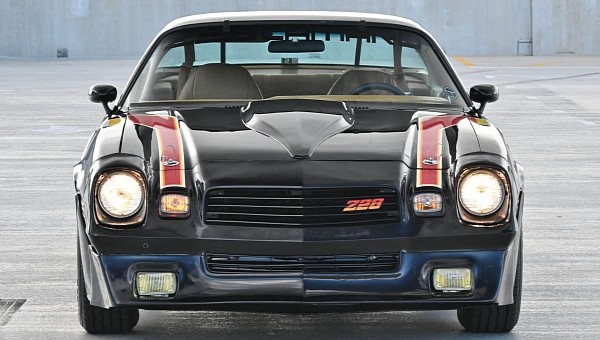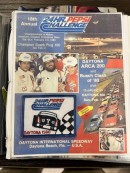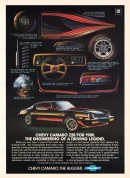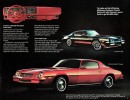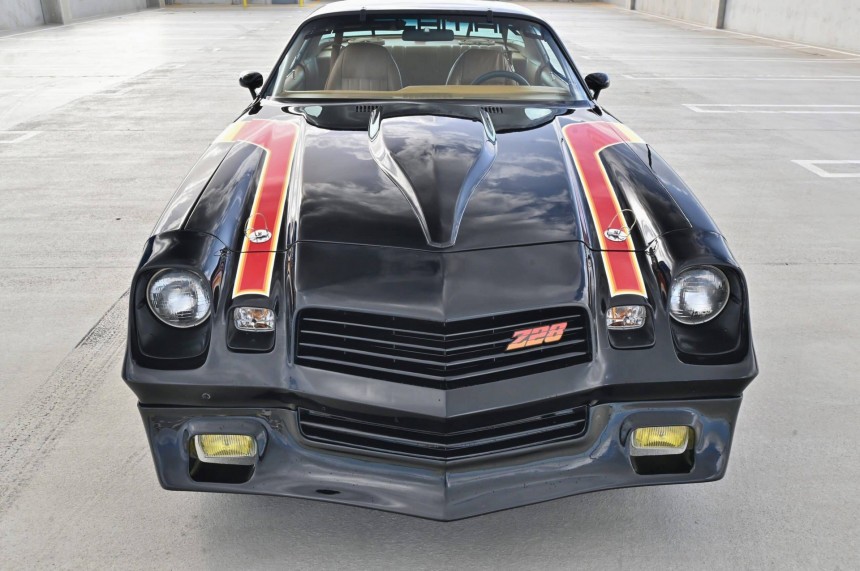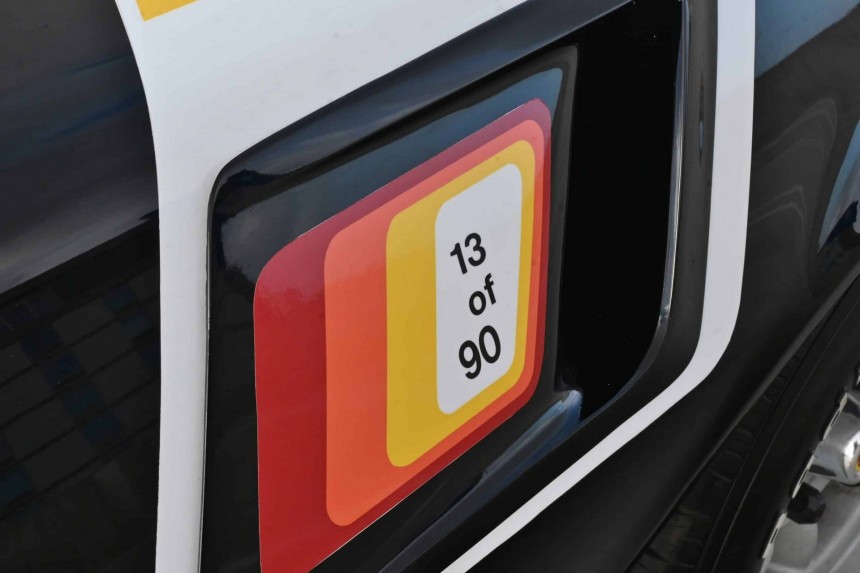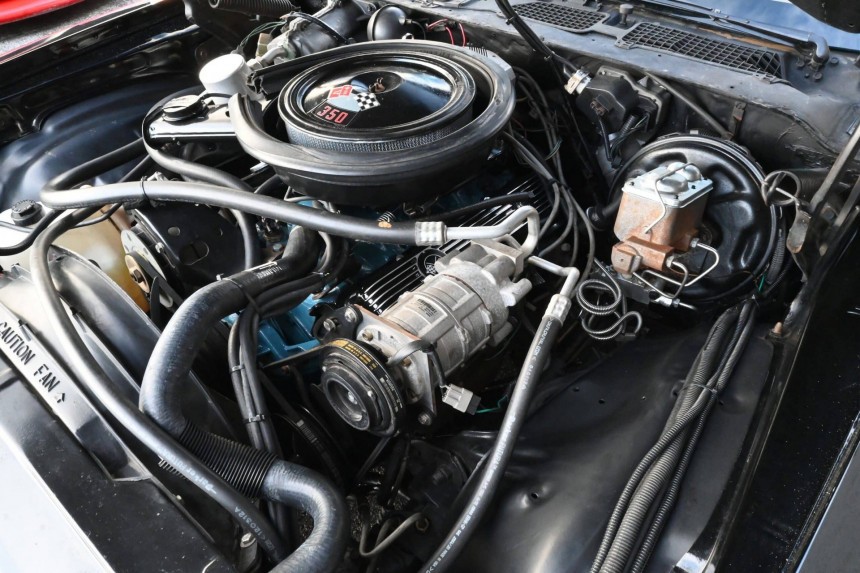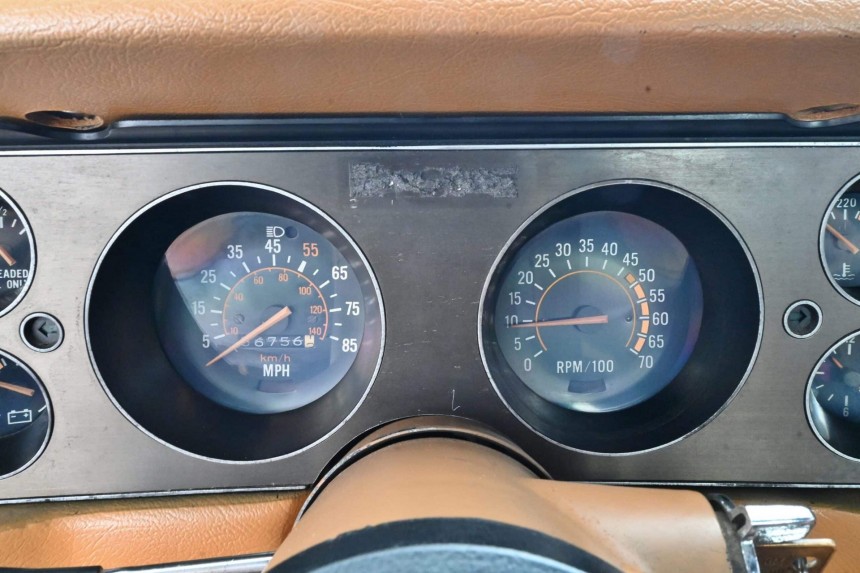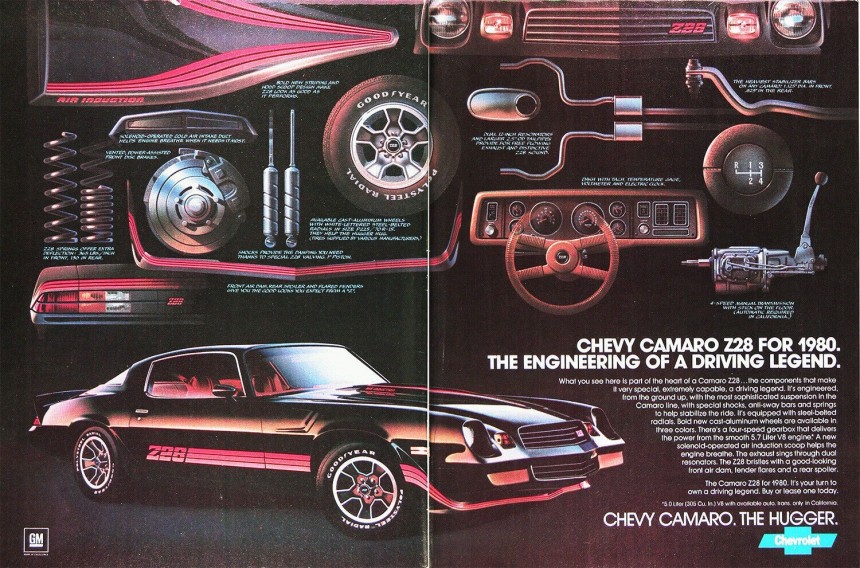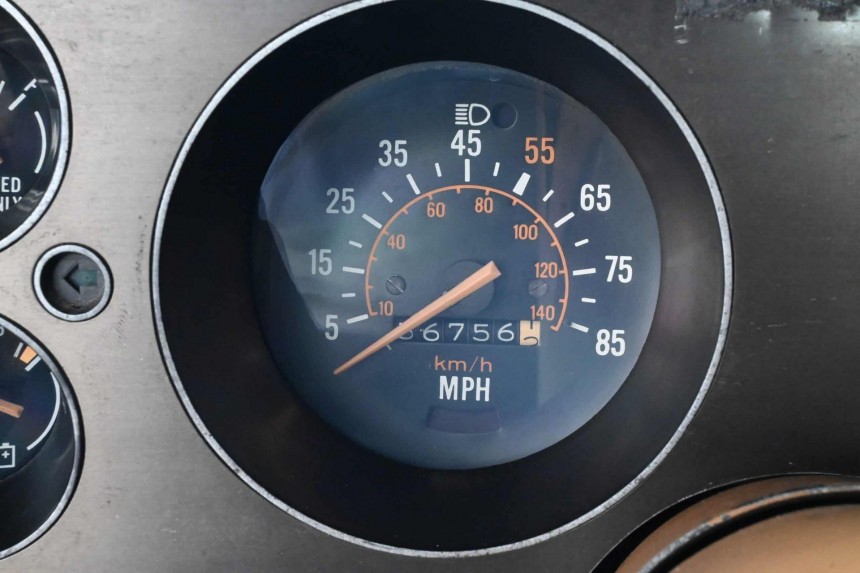At the 1980 Olympics, American athletes won precisely zero medals – primarily because the USA did not participate, boycotting the Moscow games on political grounds. The year also marked an even more memorable event for a select group – the muscle car-worshipping piston addict.
Chevrolet issued a special edition variant of its special-edition car, the famous Camaro, and applied the money-making mantra "sell Monday-to-Friday, race on Sunday" to it. Confused? Keep reading; it gets clear in a moment.
The story began in early 1979, when the Chevrolet Camaro Z28 for 1980 was getting its finishing touches. Thus, the Huggers came into metal. The… what? The Huggers, a limited-edition Camaro Z28 of the 1980 model year. 90-example limited, to be precise, and they were only sold in Florida. Why so? Because the rare cars were part of the 24 Hours of Daytona Dealer Driveaway program.
Professional racer and team owner Tom Nehl conceived the idea to make a road-legal clone of the Z28 that was to run in the famous race. However, there was a slight issue: he needed funding for his race-winning ambitions. And, just like the Olympiad absentees, he wouldn't win anything unless he raced.
The plan was pretty straightforward: build a low-series car, sell it, and use to profits to go racing. The 28 in Z28 was why the 1980 24 hours of Daytona race had a Red Orange Camaro with number 28 participating.
Abiding by Chevrolet's marketing theme (which boasted about the "road-hugging" capabilities of the Camaro), the batch was christened "Hugger." They were built as an advertising gimmick; all should have been carbon-copy Red Orange eye-catching flames.
But ten of those got different garments. Six were black with stripes; two were yellow, one was white, and the last was blue. Also, all 90 should have had automatic transmissions, but one slipped away with a four-speed manual.
The engineering befell on the shoulders of Bill Mitchell. Now is the time to remember everyone about the other famous Mitchell of General Motors – the wrench-turning one. Former racer and forever passionate about crank-induced performance, the engineer put its stamp on some spectacular Camaros of the epoch. Does the 1977 Turbo Camaro ring a bell?
He got the Hugger project, too, and the results were as expected. His company – Special Vehicle Development (SVD) – took bone-stock Z28s and tuned them into high-performing variants. Because the cars were meant to be used without restrictions, modifications were limited but very observable.
In fact, the racecar itself was built upon the factory-spec model so that the Huggers would not differ much from it. Contrary to mainstream car-selling philosophy, a racer was derived from a street car, not the other way around.
14-inch pressure-cast aluminum Minilite wheels with Dunlop Steelmax 205/70 HR 14 tires, Koni shock absorbers, SVD-developed rear stabilizer bar (borrowed from a TransAm), and SVD air dam with integrated Hela fog lamps. A Racemark steering wheel, race-mandatory windshield clips and back window strips, hood pins, and serial decals set the Huggers apart from the rest of the Z28 bunch.
Surprisingly, the under-the-hood district was left factory-intact. Because the Hugger Camaros were intended for general public use, the emissions regulations raised a severe engineering challenge for Mitchell. Elegantly, he decided to do absolutely nothing about that, leaving the street-destined 350 CID (5.7-liter) alone.
190 hp (193 PS) wasn't much of a stud race-wise, but it solved the pressing issue of law-abiding environmental bootstraps. However, the no. 28 racecar received several performance-improving alterations to the powertrain.
The emission-capping hardware was ditched, and a heavy-duty racing system replaced the stock exhaust system. Still, the small-block V8 itself wasn't tampered with. The rest of the race-derived additions – the roll cage, fuel cell, Recaro driving seat, window net, and racing belts – were obviously not offered in the Huggers.
The plan worked; the 80 Red Orange Huggers paraded on the oval before the race in February 1980 (Bill Mitchell specifically insisted that only the racecar-liveried replicas be allowed on the track for that presentation). After the event, the cars returned to the 48 Chevy dealers from the Jacksonville, Florida area to be advertised for sale.
Toward the end of the dreaded decade of American automotive impotence ('73 – '83), Chevrolet – like anyone else – had very little performance to brag with. After all, 190 hp from a 350 V8 was shameful, to say the least.
General Motors bosses turned their (and their buyers') attention to other aspects of motoring (that had nothing to do with repainting drag strips with a smoking hue of pulverized rubber). Comfort was the word of the day in 1980, and Chevrolet emphasized the quality of their suspensions in the Z28. The gallery demonstrates this with a period ad detailing the improvements made in the ride-smoothing sections.
The Huggers became a piece of Camaro nostalgia. The unique model was offered only in 1980. One of the rarer black examples is offered for sale by a Miami dealer. Interestingly, the vehicle failed to sell at the recent Kissimmee auction – the highest bid was $27,000. The asking price on the dealer's web page is $39,900, and the Z28 will once again be auctioned at the Palm Beach event on April 13-15.
The car is in excellent shape – it was part of a private Florida collection for the past 15 years, received a full-service treatment, and drives beautifully (refer to the video). The interior is original and unmolested, and the window sticker (also present in the gallery) indicates that it was a highly optioned car.
AM/FM Cassette radio, air conditioning, power steering, power windows, electric rear window defogger, cruise control, limited slip differential, and dual horns meant almost $2,000 above the base price of $6,193.
The car is powered by the same 350 V8 coupled to a three-speed Turbo-Hydramatic 350 with a 3:42 limited-slip rear differential. Additionally, the Z28 Hugger sports a new battery, a fresh set of tires and sparkplugs, a new starter, and a master cylinder.
Also, the powertrain received new seals and gaskets. In all fairness, we must point out that this Bill Mitchell-tuned car looks fast even when posing for the photo shoot. Partly because the tach needle sits at 970 RPM when the engine is off (a condition reported by other owners of the 1980 Camaro Z28 model).
This last bit contrasts profoundly with the gauge to its left – the speedometer that reads 85 mph (137 kph). This oddity was commonplace in all American vehicles of the late '70s – see the 1978 Oldsmobile Starfire Firenza example – because of the federal-indicted provision to a 1979 piece of legislation. According to the short-lived law, all speedometers had a maximum reading of 85 mph. The 55 mph (86 kph) mark was visibly emphasized.
This oddity was a remnant of the oil embargo of 1973 that spurred the US government to set nationwide fuel-saving speed limits for vehicles. The initiative was a glorious failure – the achieved fuel economy was less than 1%.
Automakers bore that scarlet letter on their speedometers for several years; mishaps such as high-performance badges with two-digit speed indicators are collateral victims of that eerie period of motoring history. This rare descendant of a noble breed, the 1980 Chevrolet Camaro Z28 Hugger no 13 of 90, goes on sale as a vivid memory of how and what (bad) politics can do to decades of hard work and progress.
The story began in early 1979, when the Chevrolet Camaro Z28 for 1980 was getting its finishing touches. Thus, the Huggers came into metal. The… what? The Huggers, a limited-edition Camaro Z28 of the 1980 model year. 90-example limited, to be precise, and they were only sold in Florida. Why so? Because the rare cars were part of the 24 Hours of Daytona Dealer Driveaway program.
Professional racer and team owner Tom Nehl conceived the idea to make a road-legal clone of the Z28 that was to run in the famous race. However, there was a slight issue: he needed funding for his race-winning ambitions. And, just like the Olympiad absentees, he wouldn't win anything unless he raced.
Abiding by Chevrolet's marketing theme (which boasted about the "road-hugging" capabilities of the Camaro), the batch was christened "Hugger." They were built as an advertising gimmick; all should have been carbon-copy Red Orange eye-catching flames.
But ten of those got different garments. Six were black with stripes; two were yellow, one was white, and the last was blue. Also, all 90 should have had automatic transmissions, but one slipped away with a four-speed manual.
He got the Hugger project, too, and the results were as expected. His company – Special Vehicle Development (SVD) – took bone-stock Z28s and tuned them into high-performing variants. Because the cars were meant to be used without restrictions, modifications were limited but very observable.
In fact, the racecar itself was built upon the factory-spec model so that the Huggers would not differ much from it. Contrary to mainstream car-selling philosophy, a racer was derived from a street car, not the other way around.
Surprisingly, the under-the-hood district was left factory-intact. Because the Hugger Camaros were intended for general public use, the emissions regulations raised a severe engineering challenge for Mitchell. Elegantly, he decided to do absolutely nothing about that, leaving the street-destined 350 CID (5.7-liter) alone.
190 hp (193 PS) wasn't much of a stud race-wise, but it solved the pressing issue of law-abiding environmental bootstraps. However, the no. 28 racecar received several performance-improving alterations to the powertrain.
The plan worked; the 80 Red Orange Huggers paraded on the oval before the race in February 1980 (Bill Mitchell specifically insisted that only the racecar-liveried replicas be allowed on the track for that presentation). After the event, the cars returned to the 48 Chevy dealers from the Jacksonville, Florida area to be advertised for sale.
Toward the end of the dreaded decade of American automotive impotence ('73 – '83), Chevrolet – like anyone else – had very little performance to brag with. After all, 190 hp from a 350 V8 was shameful, to say the least.
The Huggers became a piece of Camaro nostalgia. The unique model was offered only in 1980. One of the rarer black examples is offered for sale by a Miami dealer. Interestingly, the vehicle failed to sell at the recent Kissimmee auction – the highest bid was $27,000. The asking price on the dealer's web page is $39,900, and the Z28 will once again be auctioned at the Palm Beach event on April 13-15.
The car is in excellent shape – it was part of a private Florida collection for the past 15 years, received a full-service treatment, and drives beautifully (refer to the video). The interior is original and unmolested, and the window sticker (also present in the gallery) indicates that it was a highly optioned car.
The car is powered by the same 350 V8 coupled to a three-speed Turbo-Hydramatic 350 with a 3:42 limited-slip rear differential. Additionally, the Z28 Hugger sports a new battery, a fresh set of tires and sparkplugs, a new starter, and a master cylinder.
Also, the powertrain received new seals and gaskets. In all fairness, we must point out that this Bill Mitchell-tuned car looks fast even when posing for the photo shoot. Partly because the tach needle sits at 970 RPM when the engine is off (a condition reported by other owners of the 1980 Camaro Z28 model).
This oddity was a remnant of the oil embargo of 1973 that spurred the US government to set nationwide fuel-saving speed limits for vehicles. The initiative was a glorious failure – the achieved fuel economy was less than 1%.
Automakers bore that scarlet letter on their speedometers for several years; mishaps such as high-performance badges with two-digit speed indicators are collateral victims of that eerie period of motoring history. This rare descendant of a noble breed, the 1980 Chevrolet Camaro Z28 Hugger no 13 of 90, goes on sale as a vivid memory of how and what (bad) politics can do to decades of hard work and progress.
